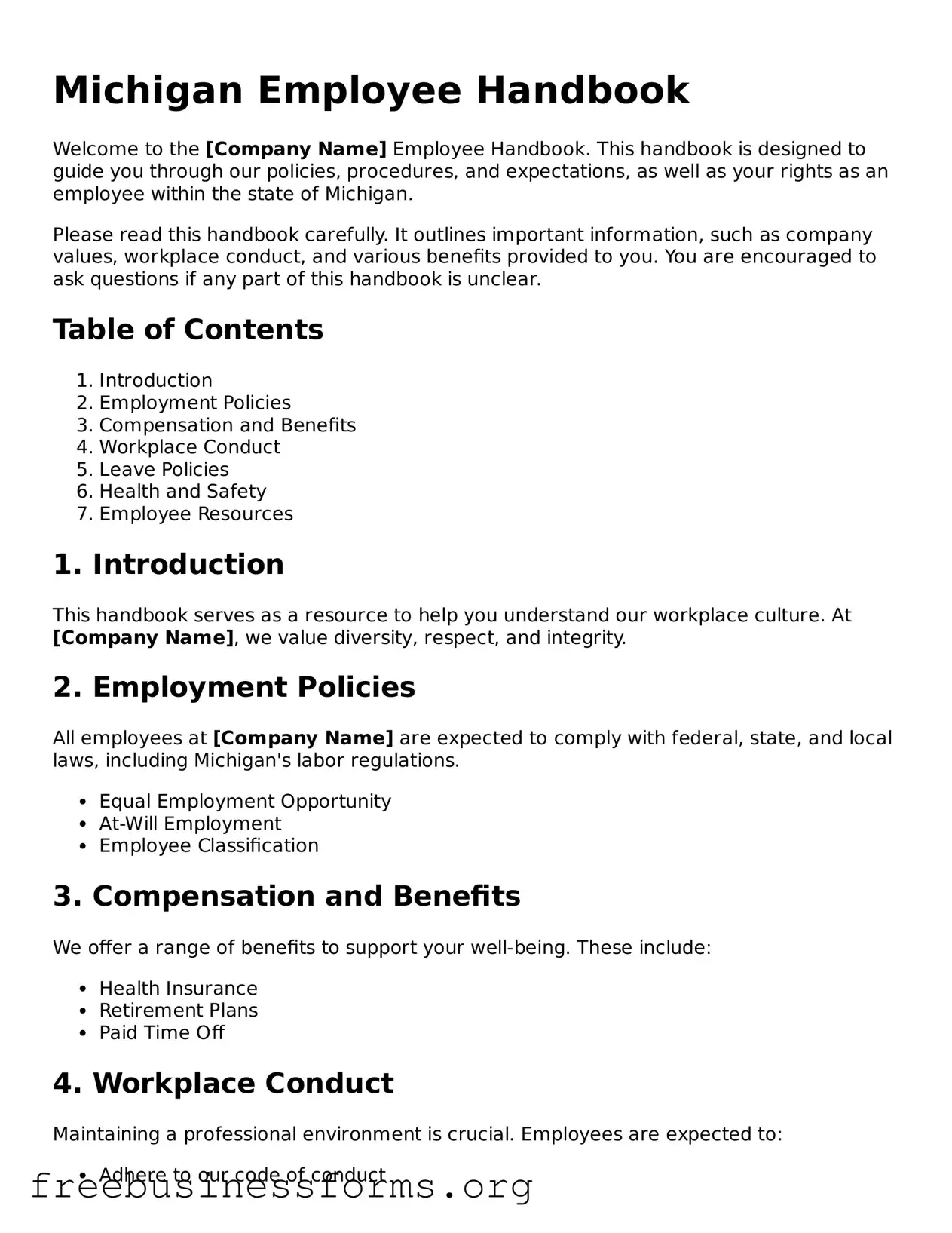Michigan Employee Handbook
Welcome to the [Company Name] Employee Handbook. This handbook is designed to guide you through our policies, procedures, and expectations, as well as your rights as an employee within the state of Michigan.
Please read this handbook carefully. It outlines important information, such as company values, workplace conduct, and various benefits provided to you. You are encouraged to ask questions if any part of this handbook is unclear.
Table of Contents
- Introduction
- Employment Policies
- Compensation and Benefits
- Workplace Conduct
- Leave Policies
- Health and Safety
- Employee Resources
1. Introduction
This handbook serves as a resource to help you understand our workplace culture. At [Company Name], we value diversity, respect, and integrity.
2. Employment Policies
All employees at [Company Name] are expected to comply with federal, state, and local laws, including Michigan's labor regulations.
- Equal Employment Opportunity
- At-Will Employment
- Employee Classification
3. Compensation and Benefits
We offer a range of benefits to support your well-being. These include:
- Health Insurance
- Retirement Plans
- Paid Time Off
4. Workplace Conduct
Maintaining a professional environment is crucial. Employees are expected to:
- Adhere to our code of conduct
- Respect coworkers and clients
- Report any incidents of harassment or discrimination
5. Leave Policies
Employees are entitled to various types of leave as per Michigan law and company policy. These include:
- Sick Leave
- Family Leave
- Bereavement Leave
6. Health and Safety
Your health and safety are of utmost importance. [Company Name] is committed to providing a safe working environment. Report any unsafe conditions immediately.
7. Employee Resources
As an employee, you have access to various resources including:
- Employee Assistance Programs
- Training and Development Opportunities
- Human Resources Contact Information: [HR Contact Info]
Thank you for being a part of [Company Name]. We look forward to a successful journey together.
